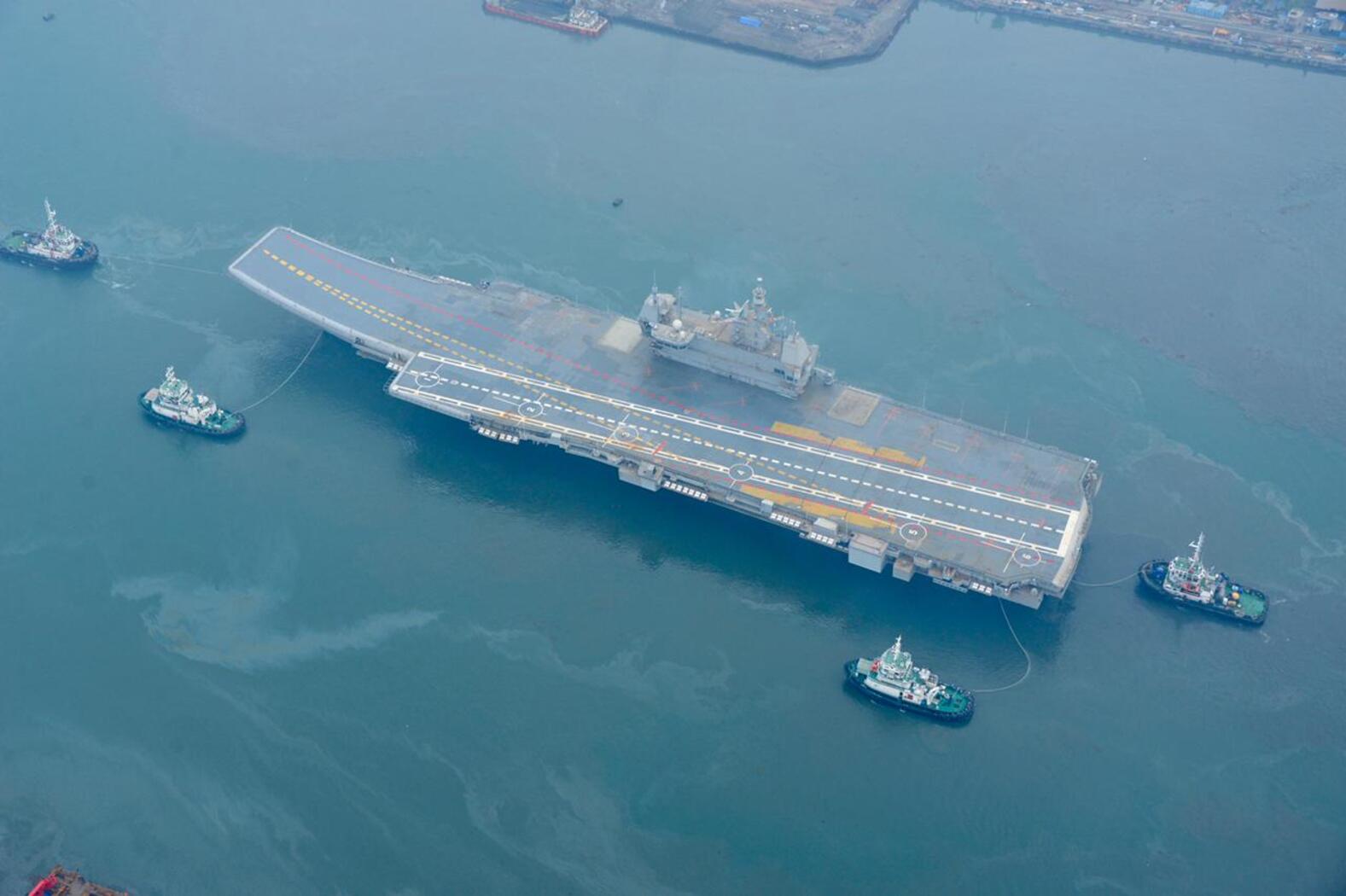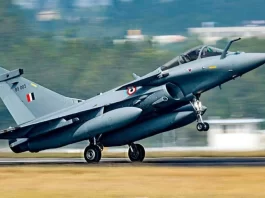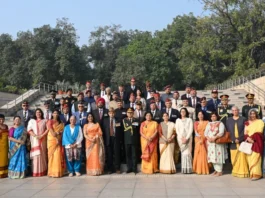Questions have always been raised about whether India needs a third aircraft carrier, but an answer exists because the Indian Navy has already prepared a blueprint for a third and most advanced Aircraft Carrier, which is expected to be called- INS Vishal.
India’s first Indigenous Aircraft Carrier (anointed IAC-1)- Vikrant (to be renamed INS Vikrant after induction), is already in its final phase of the sea trials. But speculations regarding the second homegrown carrier, INS Vishal, are no longer a secret- because the Indian Navy always wanted a third aircraft carrier to counter two front enemies, China and Pakistan.
Known as IAC-2, INS Vishal is to be built by the Cochin Shipyard Limited for the Indian Navy.
This aircraft carrier, if built, shall supplement INS Vikrant, the 40,262-tonne vessel (which will be completely operational in the upcoming days) and the 46,000 refurbished Russian Kiev-Class ship, INS Vikramaditya. Since both Vikrant and Vikramaditya are ski-jump aircraft carriers, the Indian Navy’s third carrier will be a flat-topped one with superior power projection capabilities that appear to be necessary.
𝗔𝗟𝗟 𝗔𝗕𝗢𝗨𝗧 𝗜𝗡𝗦 𝗩𝗜𝗦𝗛𝗔𝗟
The Indian Navy’s procurement of INS Vikrant (IAC-1) was always intended to be followed by a second indigenous carrier (IAC-2). Now a three-carrier fleet including INS Vikrant, INS Vikramaditya and INS Vishal is proposed so that the IN will station one of these vessels on each of its eastern and western seaboards, and a third one will be kept as a reserve to substitute them for maintenance.
According to the sources, the proposed design of INS Vishal will be a new design altogether. It will feature several significant changes compared to INS Vikrant, including an increase in the displacement and size. An Electromagnetic Aircraft Launch System (EMALS) is also considered for this ship.
Initially, the plan for the aircraft carrier included a nuclear propulsion system, which might be changed to an integrated electric propulsion system. This change was triggered by the complexities of creating a nuclear reactor with a capacity of 500 to 550 megawatts.
Earlier this year, state-owned BHEL inked a Memorandum Of Understanding (MoU) with the GE Power Conversation- a British-French organisation now owned by General Electric (as part of the Power and Propulsion Sub-Alliance that consists of Rolls-Royce, L3 Communications, General Electric Power Conversion and Thales UK). This MoU aims to enhance and boost the indigenous capabilities in making an Integrated Full Electric Propulsion System for the IN, including one for the planned carrier.
Apart from the above, the Navy also started discussing tweaking the design to accommodate both crewed and uncrewed aircraft. A slight reduction in the size was also being discussed to cut the cost, weight, and time to build the aircraft carrier.
𝐂𝐀𝐑𝐑𝐈𝐄𝐑 𝐀𝐈𝐑 𝐖𝐈𝐍𝐆 𝐎𝐅 𝐈𝐀𝐂-2
INS Vishal will be home to 30 or more fixed-wing aircraft and ten rotary-wing helicopters. The EMALS and Catapult Assisted Take-off, But Arrested Recovery (CATOBAR), along with “flat-top” platforms following American Navy models on this carrier, allow for heavier and bigger mission-minded fixed-wing aircraft. These include Airborne Early Warning (AEW) aircraft, which could provide the IN with a competitive advantage in the South Asian-Pacific Theater.
Estimates suggest that INS Vishal’s carrier Air Wing could be made up of the naval version of HAL AMCA and the carrier-based HAL Twin Engine Deck Based Fighter (TEDBF). But, there is a possibility of operating other carrier-based fighters and Mikoyan MiG-29Ks at the initial stage of INS Vishal.
As per Naval planners, the carrier is most likely to enter the services in the early 2030s, and so they should have plans of operating Unmanned Combat Aerial Vehicles (UCAVs) from the boat as well as a fixed-wing Anti-Submarine Warfare (ASW), Airborne Early Warning Control (AEW&C) aircraft along with light and medium fighters as well.
One naval planner said the carrier could greatly expand the Navy’s mission envelope with UCAVs, using the pilot-less aircraft for high-risk reconnaissance and suppression of enemy air defences (SEAD). They had highlighted that mid-air refuelling would let the IN continuously keep UCAVs on a mission for 24-36 hours since pilot fatigue would not be a problem.
𝐖𝐇𝐀𝐓’𝐒 𝐓𝐇𝐄 𝐍𝐄𝐄𝐃 𝐅𝐎𝐑 𝐀 𝐓𝐇𝐈𝐑𝐃 𝐂𝐀𝐑𝐑𝐈𝐄𝐑?
Aircraft carriers are an essential element concerning sea control, and as per India’s Maritime doctrine, sea control stands as the central concept around which the Indian Navy is structured. Assuring the security and control of maritime space for any given time would not be possible without a stand-off capability provided by the Carrier Group (boat and its assets).
Moreover, the functional diversities that the “Group” may have to bear include: wide-area domain awareness, support of amphibious operations, deterrence, land-attack missions, personnel evacuation and command and control of large forces.
The Carrier Group also provides operational flexibility, firepower and agility to the Commander, unmatched by any other maritime force.
Additionally, it also has the potential to sustain the conditions for long-term power projection and offensive presence. During the adversary’s build-up phase and preparation, it can deny free access to its bases.
Lastly, as opposed to ground-based air and land forces, maritime power, particularly the most potent yet the least intrusive of military power, is represented by the Carrier Group as it operates in and from the international waters.
Critics argue that aircraft carriers act as sitting ducks for long-range anti-ship ballistic missiles, which have undergone rigorous developments and testing in recent years. But the mobility and the escort vessels’ protection (which generally includes corvettes, supply ships, frigates, and destroyers) turn these vessels into a highly secure wartime investment.
The BrahMos supersonic anti-ship missile, equipped with a range of 290+ km, is also installed on the Indian aircraft carriers, enabling them to carry out sophisticated sea-to-land operations with precision. They also serve as disaster relief and humanitarian aid providers during peacetime, supplementing amphibious and other sealift and air methods.
𝐓𝐇𝐄 𝐁𝐎𝐓𝐓𝐎𝐌 𝐋𝐈𝐍𝐄
Considering the above, a larger, more complex ship would also offer corresponding delay risks. Less ambitious designs, such as an enlarged STOBAR vessel following from the design of IAC-1, may turn out to be a more conservative but attractive boat.
In the unlikely event that the IN had already made a quick decision last year to commence fabricating a conservative IAC-2 design as soon as possible, the lengthy 13-14 years taken for IAC-1, Vikrant, to proceed from laying down to commissioning reflects that it is very unlikely that a third carrier might enter the service before the early 2030s.






